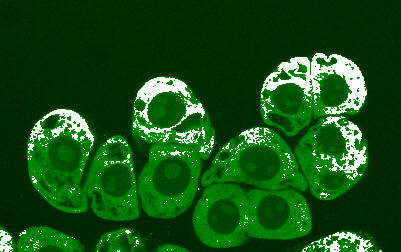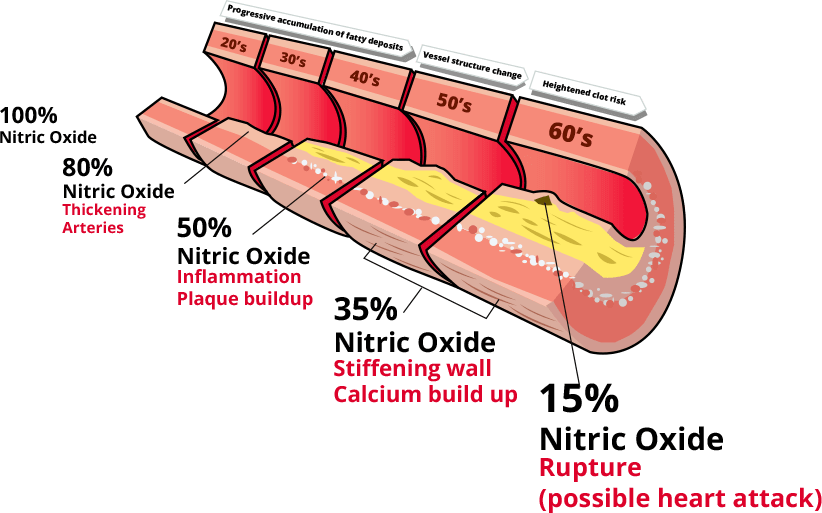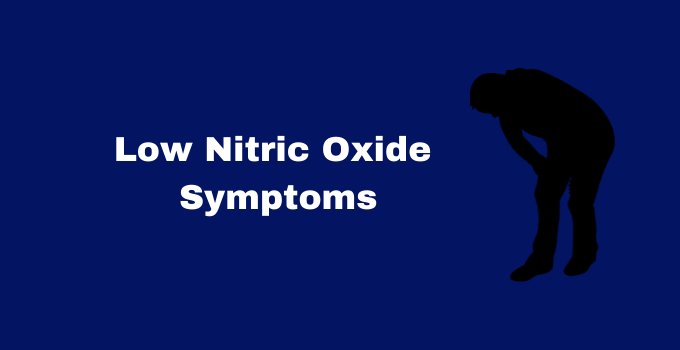Every person on earth has a different body and also a different experience with health problems. Nitric oxide symptoms can vary from person to person based on their age, weight, and lifestyle choices.
There are many problem comes out when our body completely stops or slows the production of nitric oxide. And in this article you will know the some common low nitric oxide symptoms and some tips to increase it.
1.What is Nitric Oxide?
Nitric oxide is considered as a free radical, which also known as ‘oxygen-donating oxidant’.

It’s unique function in our body include signaling and activating the cell membrane. It regulates neurons activity and provides protection of nerve cells against lipid peroxidation (i.e., activation of hydrogen peroxide). As well, it acts an important component for transportation across all biological membranes by opening up ion channels.
Nitric Oxide is a molecule that is naturally produced in the body and can increase immune system functioning. Nitric Oxide through immune system functions helps to protect the entire body from different types of infections, especially viral infections such as herpes simplex type 2 (HSV-2).

What are some of the low nitric oxide symptoms?
You will see the below nitric oxide symptoms when your body’s nitric oxide production goes in a good but out of balance state.
Erectile dysfunction – This one is really embarrassing for a normal man. Nitric oxide deficiency will bring erectile dysfunction (ED) issues in due time on the long term, especially in aging men. And it’s common with brain function and sexual performance as these two are closely related to each other through nitric oxide production and circulation system.
Erections – When NO levels not sufficient then you won’t feel any sexual desire which usually leads erection issues
Vascular Problem affects the network of the blood vessels which is another symptom of low nitric production in the body which causes numbness and weakness in the leg. Burning and itching feel in the toes while resting.
Atrophic gastritis is considered as one of the main low nitric oxide symptoms, caused by food residue and its digestive microbes thay form RBCs (red blood cells). This happens at age 25-35. Sluggish stomach emptying(lengthy time for it to be empty) into small intestine
Low Vision: Another common low nitric oxide symptoms includes shortness sight Vision. In some years it become blurred which finally leads to blindness; or when your heart patient and develop sickly senile eyesight Losses vision
Slow Recovery from sickness or injury is another common side effects of low nitric oxide level in the body: You will feel weak and recovery take longer You might continue to feel ill despite improved condition
Chronic stress level: your body are strained or in negative state under stress
Headaches and migraines are another symptoms of low nitric oxide in the body
What happens if nitric oxide levels are too high?
Nitric oxide (NO) is a chemical that plays an important role in blood pressure regulation. When high amounts of nitric oxide are produced, pressure rises and fluid flows out of the blood vessels. This can lead to hypertension, high blood pressure; if low levels are present then no flow occurs due to vasodilation or “widening” off the arteries so their walls stretch considerably which causes damage.
Other symptoms of high levels include;(1) a blocked nose which can lead to stuffy noses, red eyes and throat pain (2) Lack-of appetite that leads to thin, frail body shape.
Chronic stress, disease and other adverse factors in your life (like smoking or being chronically ill) can also have an effect on nitric oxide levels. If they go too high then it may cause a short circuit to occur within the human body which leads to numerous symptoms including various forms of heart trouble; like angina-chest pain that limits breathing Poor blood flow Distorted heart rhythms
Do you want to know how to increase nitric oxide?
Nitric oxide is a gas that aids in the relaxation of your blood vessels. It also helps dilate the arteries and improve the flow of oxygen-rich blood to all parts of your body. In order to increase nitric oxide, there are certain foods that you should be consuming every day.
Boosting nitric oxide is not easy, but it’s possible. I’m going to show you what the research says, and then give you 5 ways that have worked for me !!!
How to Increase Nitric Oxide Naturally-What My Family Does Everyday. This may sound somewhat unscientific but my family is proof that we all can do something positive in our own health, it doesn’t take much more than the right attitude and some daily habits to improve your nitric oxide levels and start living a healthy life:
- Go for walks outside everyday !!! (It’s better how fresh air whatever!)
- Eat fruit daily !!!
- Get a good night sleep (8-9 hours)
- Exercise on a regular basis !!!!
- Do mild stretching exercises for at least 15 minutes per day 6 Work in the evening
After these basic changes you can try some of my other recommendations to keep your nitric oxide levels up:
Combine your NO boosting foods – include them into each meal and snacks, this really speeds things up!
Healthy lifestyle – include something healthy into your daily routine, whether it’s getting a massage, going for walks or some other activity. Various studies show that people who exercise regularly have much healthier arteries and nitric oxide levels than those not exercising at all !!!
I strongly urge you to drink water. Water contains different types of beneficial elements in addition to the good stuff naturally present on its natural surface:
Asparagus extract is a great way !!!
Asparagus helps the body get rid of muscle aches and pain. It helps with calming panic attacks, mental confusion, anxiety and depression due to poor sleep quality
Using water as a natural way of increasing nitric oxide content has been proven to have an effect on symptoms associated by hypotension such as; hyperhidrosis (excessive sweating), edema (swelling) !!!
Nitric oxide supplements such as Vigrx Nitric Oxide increases the amount of nitric oxide available to resist arteriosclerosis and hypertension, which seem to be mainly caused by inflammation !!! Nitrates found in foods are always recommended for those who have high blood pressure than taking supplements.
Conclusion
The primary function of nitric oxide is to regulate blood pressure. When high levels are produced, it causes vasodilation which leads to hypertension and other symptoms like a blocked nose or thin body shape. If low levels are present then no flow occurs due to vasoconstriction or “narrowing” off the arteries so their walls stretch considerably which causes damage.
Web References
- https://www.sciencedirect.com/science/article/pii/S0098299704000743
- https://www.jstor.org/stable/24939060
- https://onlinelibrary.wiley.com/doi/abs/10.1111/j.1365-2222.2004.01888.x
- https://link.springer.com/article/10.1007/s00345-008-0303-y
Affiliate Disclosure: Some of the links in this post are affiliate links, which means I may earn a small commission if you make a purchase through those links. This comes at no extra cost to you. Thank you for your support!

